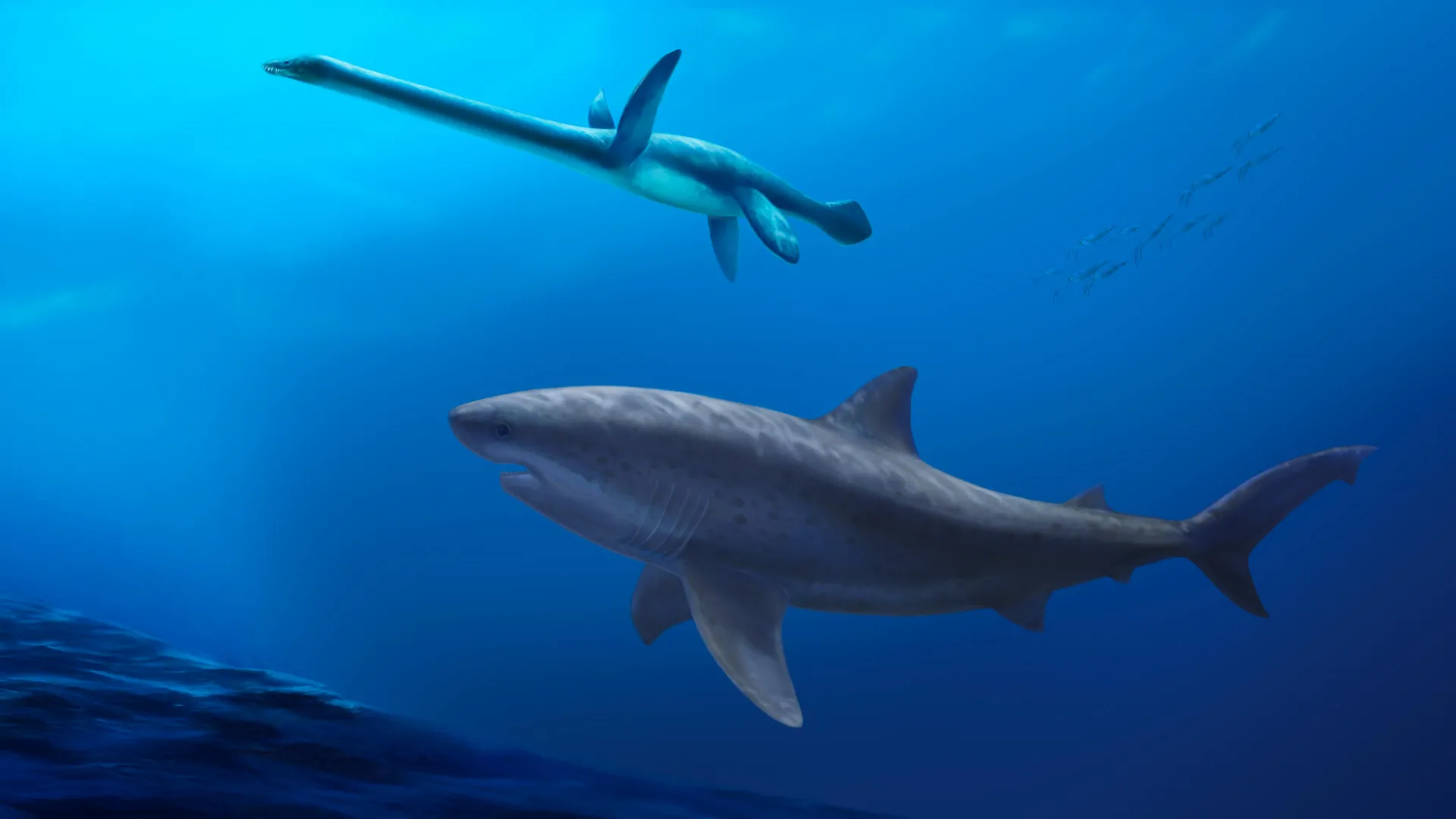Fossils reveal a massive shark that ruled Australia in dinosaur times
- Date:
- November 22, 2025
- Source:
- Swedish Museum of Natural History
- Summary:
- Around 115 million years ago, northern Australia’s seas hosted a colossal shark that rewrites what we thought we knew about early ocean predators. New fossil discoveries show that modern-type sharks were experimenting with gigantic sizes far earlier than scientists believed, competing with the marine “monsters” of the dinosaur age.
- Share:

Around 115 million years ago, the waters north of Australia supported a massive shark that can be viewed as an early relative of the creatures made famous by "Jaws." Newly examined fossils show that modern sharks began developing extremely large body sizes far earlier in their evolutionary timeline than scientists once thought. These remains indicate that enormous sharks shared the top of the food chain with giant marine reptiles during the Age of Dinosaurs. The research introduces a broad, interdisciplinary effort to track how shark size changed through deep time.
Modern sharks trace their roots back more than 400 million years, yet the branches that eventually produced today's species originated during the Age of Dinosaurs. The oldest fossils representing these modern lineages date to about 135 million years ago. These early sharks, known as lamniforms, were small and may have measured only around 1 m (~3 feet) in length. Over millions of years they evolved into much larger forms, including the enormous 'Megalodon', which may have exceeded 17 m (56 feet), and the modern Great White shark, an apex-predator that reaches about 6 m (20 feet).
Why Shark Fossils Are Mostly Teeth
Because sharks possess skeletons made of cartilage, their bodies rarely fossilize. As a result, most of what survives are their teeth, which are shed continuously and accumulate on ancient sea floors. These teeth commonly appear in sedimentary rocks alongside the bones and teeth of fishes and the giant marine reptiles that dominated many prehistoric ocean ecosystems.
The rocky shores near today's city of Darwin in northern Australia were once part of the mud-covered floor of the Tethys ocean, a vast body of water that extended from Gondwana (now Australia) to the island chains of Laurasia (now Europe). Numerous remains of ancient marine life have been uncovered here, including plesiosaurs (long-necked marine reptile resembling the popular image of the Loch Ness monster), ichthyosaurs ('fish-lizards'), and large bony fish. Among the most remarkable discoveries are several huge vertebrae that indicate the presence of a very large lamniform shark.
Revealing the Early Giant: Cardabiodontid Characteristics
Five vertebrae have been recovered, each partly mineralized, which helped preserve them. Their structure is almost identical to that of today's Great White shark. However, while adult Great Whites have vertebrae about 8 cm wide, the vertebrae from the Darwin shark exceed 12 cm in diameter. Their features clearly link them to a cardabiodontid, a group of giant predatory sharks that inhabited the oceans around 100 million years ago. The Darwin specimen is especially notable because it is roughly 15 million years older than other known cardabiodontids and had already reached the extremely large size typical of the group.
To determine the body size of this early modern shark mega-predator, a team of researchers from multiple fields collaborated on a detailed analysis. The group included paleontologists and specialists in tomography from the U.S.A. Sweden, and Australia, as well as ichthyologists from South Africa and the U.S.A.
The findings appear in the Nature portfolio journal Communications Biology. Fossils of ancient sharks from the Age of Dinosaurs can be viewed by the public at the Swedish Museum of Natural History.
Story Source:
Materials provided by Swedish Museum of Natural History. Note: Content may be edited for style and length.
Journal Reference:
- Mohamad Bazzi, Mikael Siversson, Sabine Wintner, Michael Newbrey, Jonathan L. Payne, Nicolás E. Campione, Aubrey J. Roberts, Lisa J. Natanson, Stephen Hall, Tatianna Blake, Benjamin P. Kear. Early gigantic lamniform marks the onset of mega-body size in modern shark evolution. Communications Biology, 2025; 8 (1) DOI: 10.1038/s42003-025-08930-y
Cite This Page: